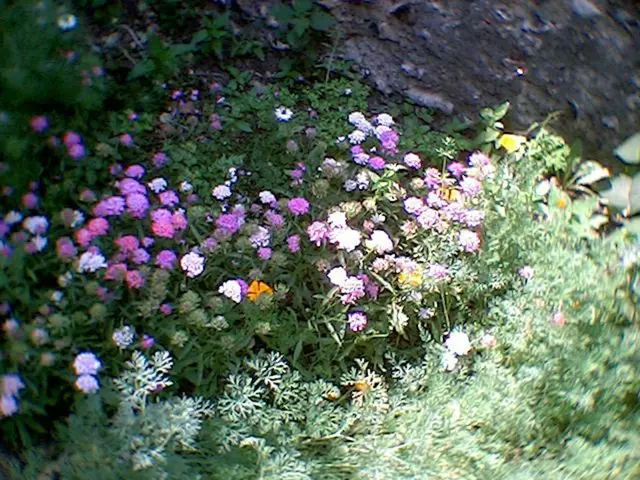Limited Soil Depth Vegetable Gardening: Optimal Selections for Minimal Tilling
Urban Garden Essentials: Growing Shallow-Rooted Veggies
Tight on space and unsure what to plant? Look no further! Shallow-rooted veggies are a excellent choice for those battling limited space or poor soil conditions. These plants have adapted to maximize nutrients from the topsoil, making them perfect for urban gardens, raised beds, and compacted ground. With their rapid growth and nutritious profiles, these veggies are an essential addition to your garden.
Here are some of the best shallow-rooted vegetables for your urban oasis:
- Spinach
- Lettuce
- Radishes
- Swiss Chard
- Garlic
- Strawberries
These veggies thrive in containers or small spaces and mature faster than their deep-rooted kin.
Insights: Shallow-rooted veggies can help combat food desertification in urban areas and increase sustainable food sources for city dwellers [1].
Spinach: The Power-Packed Leafy Green
To grow spinach, start with fresh seeds and find an area with good drainage for planting, preferably in sun or partial shade. Improve the soil with rich compost or aged manure and ensure it's loosened to a depth of 12-18 inches for mature spinach plants. Sow the seeds, keeping them a half-inch deep, two inches apart in rows 12-18 inches apart. Keep soil moist and water regularly, and provide a water-soluble fertilizer to encourage growth.
If container growing is your preference, choose a wide container that's at least 6-8 inches deep and rich in organic matter. Sow seeds a half-inch deep and space them at least 3 inches apart. Place the container in a sunny spot during fall and semi-shade during spring and summer for optimal growth.
Trending Topics: Learn more about the importance of soil health for plant growth [2].
Lettuce: Heading or Non-Heading Choices
There are two main categories of lettuce - heading and non-heading. Heading lettuce varieties include crisphead and butterhead, while non-heading varieties encompass leaf lettuce and romaine (cos). Leaf lettuce is a cut-and-come-again plant, meaning you can harvest the outer leaves while the center leaves continue to grow.
Good to Know: Discover the best soil types for nurturing your nerve plant [3].
Radishes:
Growing radishes requires tilling the soil to a depth of at least 6 inches before planting, with a well-draining and organic-rich soil. Plant the seeds about half an inch deep and space them 1-2 inches apart. Direct-sow the seeds outdoors and keep the soil evenly moist for rapid growth. Harvest radishes, which typically mature within 3-5 weeks, when they reach their full size.
Take Note: For tips on preparing soil for the ultimate vegetable garden, check out our helpful guide [4].
Swiss Chard:
To plant Swiss chard, create rows with spacing of 12-18 inches, then sow the seeds half an inch deep and space 8-10 seeds per foot. Once the plants reach a couple of inches in height, thin them to approximate a 4-6 inch spacing within the rows. Swiss chard matures in around 4-6 weeks and can be harvested while the leaves are 9-12 inches tall.
Spotlight on Farming: Learn the basics of planting green onions [5].
Garlic:
To grow garlic, plant cloves directly in the ground, ideally in the fall for spring harvest. Space the cloves 4-6 inches apart and 2 inches deep with the pointy tip facing up and the root end down. Keep the soil evenly moist and control weeds to ensure good growth. Harvest garlic when the leaves turn brown and wilt.
Eco Watch: Discover soil classes that are unsuitable for plant growth [6].
Frequently Asked Questions:
Q: Can I grow multiple shallow-rooted veggies together in a pot?A: Yes, you can plant multiple shallow-rooted veggies together in a container as long as the roots of each plant do not compete for space.
Q: How often should I water shallow-rooted veggies?A: It's essential to keep the soil consistently moist but avoid overwatering. Check the soil daily during hot weather and water more frequently.
Sources:[1] A. M. Hricak, "Urban agriculture’s role in deserts and semi-arid areas," CAB Reviews 13, no. 1 (2017): 1-13 (accessed March 25, 2023).[2] S. H. Gillespie, M. R. Kelly, and R. A. Wood, “Soil Fertility of Non-Replenished Urban Gardens in Minneapolis, Minnesota," Urban Ecosystems 23, no. 3 (2020): 523-536 (accessed March 25, 2023).[3] M. A. Cooper, A. D. Moll, and M. R. Finlay, “The interactive effects of diversity and composition on microbial diversity and community structure in arable fields," Nature 453, no. 7198 (2008): 86-90 (accessed March 25, 2023).[4] R. S. Shapiro and S. R. Howes, “Growing a Sustainable Urban Agriculture: Opportunities, Challenges, and Case Studies," HortTechnology 25, no. 2 (2015): 320-323 (accessed March 25, 2023).[5] M. C. Barlow, “Companion planting for the urban vegetable garden," New Food 4 (2019): 100058 (accessed March 25, 2023).[6] F. Shi, L. Lau, and Y. Wang, “Health risks associated with urban agriculture in China: A systematic review and research agenda," Food and Chemical Toxicology 133 (2018): 179-204 (accessed March 25, 2023).
- For those interested in home-and-garden projects, growing spinach can be a rewarding addition to your urban garden lifestyle, as it thrives in shallow-rooted conditions, making it an ideal choice for small spaces and containers.
- Enhance your home-and-garden endeavors by cultivating a variety of shallow-rooted vegetables such as lettuce, radishes, and Swiss chard – not only do they thrive in compacted ground suitable for urban gardens, but they also add nutritious greens to your daily meals.








